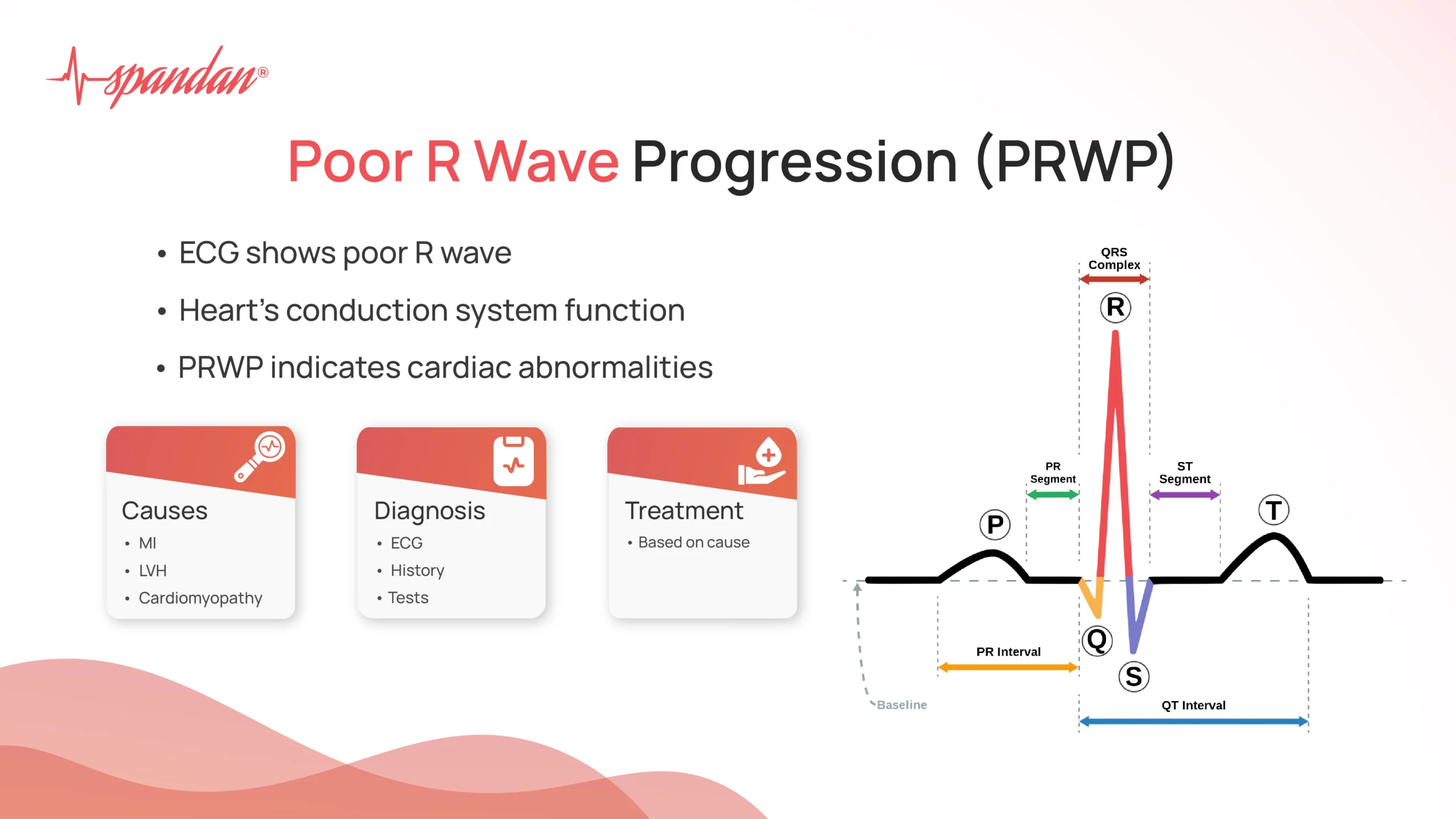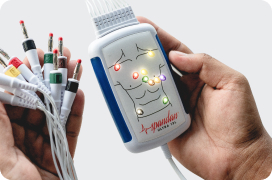
Author:- Mr. Ritesh Sharma
Poor R Wave Progression is a well-known abnormality within the domain of an electrocardiogram as you must already know an ECG test is performed to check the electrical activity of the heart over a period of time. Furthermore, the heart abnormalities in an ECG test are determined in waveforms. So, R Wave is one of these waves that can potentially show abnormalities on an ECG test. However, poor R wave progression is associated with abnormalities in the heart’s conduction system.
Now, before we proceed to explain the poor R wave progression, let us try to understand the conduction system of the heart. This system is responsible for orchestrating the circulation system in the body. It consists of the natural pacemaker of the heart, i.e., the sinoatrial node, and different other parts such as the atrioventricular node, the bundle of his, and Purkinje fibers. This system lets the heart contract and relax through the chambers of the heart and supply blood to all vital parts of the body.
Therefore, the abnormalities related to this conduction system of the heart are showcased on an abnormal ECG through poor R wave progression. In this blog, we will cover the intricacies of PRWP, exploring its causes, diagnostic significance, and treatment options.
Understanding Poor R Wave Progression (PRWP)
The R wave in an ECG represents the electrical depolarization of the ventricles, specifically the left ventricle. Normally, as the ECG leads move from the right side of the chest to the left, the R wave should gradually increase in amplitude. However, in cases of poor R wave progression, this progression is blunted or absent. PRWP can indicate several underlying cardiac issues, ranging from benign anatomical variations to more serious conditions like myocardial infarction or left ventricular hypertrophy.
Causes of Poor R Wave Progression
- Anatomical Variations: In some individuals, the positioning of the heart within the chest cavity can lead to atypical ECG patterns, including PRWP. While these variations are often benign, they can cause confusion during interpretation, necessitating further evaluation to rule out pathology.
- Myocardial Infarction (Heart Attack): One of the most concerning causes of PRWP is myocardial infarction, commonly known as a heart attack. When a portion of the heart muscle is deprived of oxygen due to a blocked coronary artery, it can result in abnormal electrical activity, including changes in the ECG pattern such as PRWP.
- Left Ventricular Hypertrophy (LVH): LVH is a condition characterized by an enlargement and thickening of the muscle wall of the left ventricle. This can occur due to hypertension, aortic stenosis, or other underlying cardiac conditions. In LVH, the ECG may show signs of abnormal electrical conduction, including poor R wave progression.
- Cardiomyopathy: Various forms of cardiomyopathy, including hypertrophic cardiomyopathy and dilated cardiomyopathy, can lead to changes in the ECG pattern, including PRWP. These conditions involve abnormalities in the structure and function of the heart muscle.
- Pericardial Effusion: Pericardial effusion refers to the accumulation of fluid around the heart. This can compress the heart and interfere with its electrical conduction system, resulting in abnormal ECG findings, including poor R wave progression.
Diagnosis of Poor R Wave Progression
Diagnosing PRWP begins with obtaining an ECG. The ECG waveform is analyzed to determine the presence and severity of poor R wave progression. However, it’s essential to consider the clinical context alongside the ECG findings. A thorough medical history, physical examination, and additional tests such as echocardiography, stress testing, or cardiac MRI may be necessary to identify the underlying cause of PRWP.
Treatment and Management
The management of PRWP depends on its underlying cause:
- Anatomical Variations: If PRWP is attributed to benign anatomical variations, no specific treatment may be required. However, periodic monitoring and follow-up ECGs may be recommended to ensure stability.
- Myocardial Infarction: In cases where PRWP is indicative of myocardial infarction, prompt intervention is crucial. Treatment may involve medications to relieve symptoms, reperfusion therapy (such as thrombolytics or percutaneous coronary intervention) to restore blood flow to the affected area, and lifestyle modifications to reduce the risk of future events.
- Left Ventricular Hypertrophy: Management of LVH focuses on addressing the underlying cause, such as controlling hypertension or treating aortic stenosis. Medications to reduce blood pressure or surgical interventions may be necessary in some cases.
- Cardiomyopathy: Treatment of cardiomyopathy aims to manage symptoms, slow disease progression, and reduce the risk of complications. This may involve medications such as beta-blockers, ACE inhibitors, or diuretics, as well as lifestyle modifications and, in some cases, surgical interventions such as implantable cardioverter-defibrillator (ICD) placement or heart transplantation.
- Pericardial Effusion: Management of pericardial effusion depends on its severity and underlying cause. Small effusions may resolve on their own, while larger effusions or those causing symptoms may require drainage procedures such as pericardiocentesis or surgical intervention.
The Poor R Wave Progression can be classified as a tricky condition on an electrocardiogram. Furthermore, the underlying causes of this condition are also hard to deal with. However with the correct treatment approach considering the underlying condition and its severity, healthcare professionals can cure this condition after being detected on an electrocardiogram.
Prompt recognition and appropriate management of PRWP are essential for optimizing patient outcomes and preventing further cardiac complications. As with any cardiac abnormality such as cardiac arrhythmias or heart dysfunctions, a multidisciplinary approach involving cardiologists, primary care physicians, and other healthcare providers is key to providing comprehensive care to patients with poor R wave progression.




